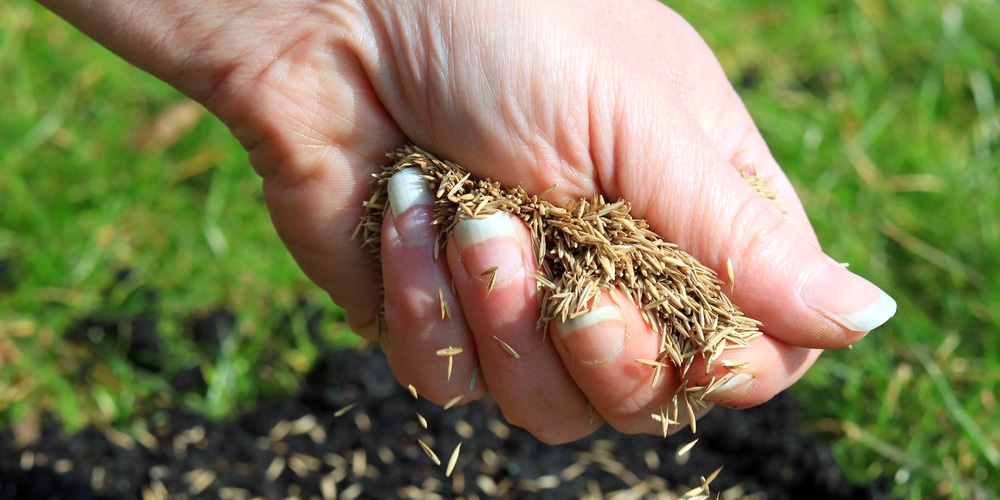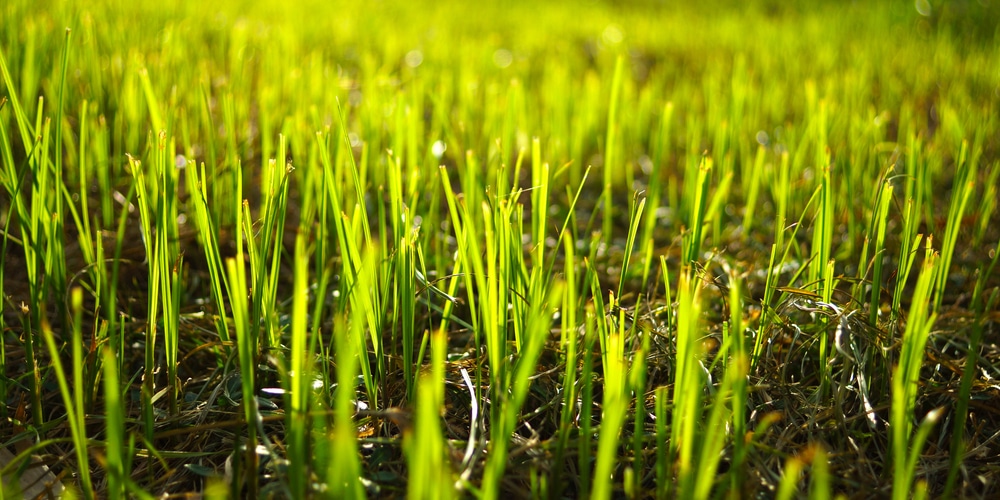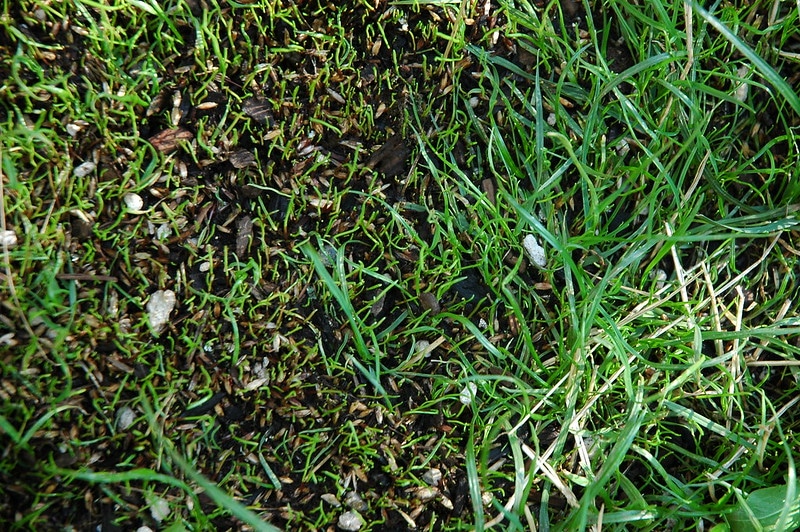There’s nothing quite like the feeling of fresh, green grass under your feet. Unfortunately, in some parts of the country, that’s a rarity. If you’re one of the lucky ones with a green thumb and want to plant your grass, you may be wondering what temperature kills grass seed.
This article will cover the most popular types of grass seed and tell you what temperature will kill them. We’ll also give you some tips on beating the heat and keeping your lawn healthy!
What Temperature Kills Grass Seed?

One of the most common myths about growing grass is that extremely hot or cold temperatures will kill grass seeds.
However, this is not the case. Grass seeds are quite resilient and can withstand a wide range of temperatures. The only time you need to be concerned about temperature is when there is a freeze-and-thaw cycle.
This type of weather attracts mold and moisture, which can quickly destroy grass seeds.
Additionally, grass seeds in these conditions may sprout during a brief warm period. Then, the new grass seedlings can be killed by a sudden frost. To avoid killing your grass seed, it’s best to seed your lawn when there is no chance of frost for at least the next six weeks.
By following this simple advice, you can ensure that your grass seed has the best chance of germination and growth.
Is Grass Seed Ok To Freeze
Though it may seem counterintuitive, grass seed benefits from freezing weather; grass seed is designed to remain dormant during the winter months, then sprout once daytime temperatures rise above freezing.
This ensures that new grass growth occurs during the warmer spring and summer months when conditions are more favorable for plant growth.
As long as your grass seed has not been spread on your lawn, it is perfectly fine to store it in a garage or garden shed during the winter. Subjecting grass seed to freezing temperatures can help to improve its germination rate.
So if you’re looking to give your lawn a boost come spring, don’t be afraid to let your grass seed chill out this winter.
What Temperature is Bad for Grass Seed?
Just as people need the right temperature to be comfortable, so do grass seeds. If the temperature is too low, the seed will not germinate. If it’s too high, the grass may die.
The ideal temperature for grass seed to germinate is between 59 and 86 degrees Fahrenheit. But what happens if the temperature falls outside of that range?
Seeds that are exposed to temperatures below 59 degrees Fahrenheit will not germinate. This is because the enzymes responsible for breaking down the seed coat and starting the growth process are inactive at lower temperatures.
As a result, the seed will remain dormant until favorable conditions. However, freezing temperatures can damage or kill seeds, so it’s important to ensure they are kept warm enough to avoid freezing.
Seeds exposed to temperatures above 86 degrees Fahrenheit may also fail to germinate. In some cases, the heat causes the seed coat to harden, making it difficult for water and oxygen to penetrate and reach the embryo inside.
Additionally, high temperatures can cause the enzymes responsible for germination to break down, preventing them from doing their job. If grass seeds are exposed to high temperatures, they may die before they have a chance to grow.
Germinating Popular Grasses in Hot Weather
Now that we’ve answered the question, “what temperature kills grass seed,” let’s look at some of the most popular types of grass and how they fare in hot weather.
Bermuda Grass
Bermuda grass is a warm-season grass that thrives in temperatures between 80 and 95 degrees Fahrenheit. It is resistant to drought and can tolerate long periods of heat.
Zoysia Grass
Zoysia grass is another warm-season grass that does well in hot weather. It is tolerant of high temperatures and can withstand drought conditions.
St. Augustine Grass
St. Augustine grass is a heat-tolerant grass that can withstand temperatures up to 100 degrees Fahrenheit. It is also resistant to drought and can tolerate long periods of heat.
Tips for Seeding Your Lawn in Hot Weather
If you live in an area with hot weather, there are a few things you can do to help your grass seed germinate and grow:
- Water your lawn regularly. Grass seeds need water to germinate, so keep your lawn moist.
- Mow your lawn frequently. Mowing helps remove dead and dying grass, which can provide more space and sunlight for new seedlings to grow.
- Fertilize your lawn. Fertilizer provides the nutrients that grass needs to grow.
- Seed your lawn in the fall. The cooler temperatures of fall are ideal for grass seed germination.
What temperature kills grass seed: Conclusion
While it’s important to know what temperature kills grass seed, it’s also worth noting that many factors can affect the germination and growth of grass.
If you’re concerned about the temperature, take other steps to create favorable conditions for your lawn. With care and attention, you can have a beautiful lawn no matter the weather.
Related Article: Will Grass Seed Grow on Top of Soil?


